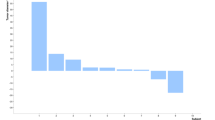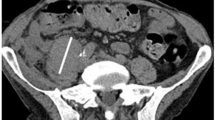Abstract
We have previously reported that intratumoral injection of VRX-007—an Ad5 (a species C adenovirus)-based vector overexpressing adenovirus death protein—can suppress the growth of subcutaneous HaK (hamster renal cancer) tumors. VRX-007 replication and tumor growth inhibition are enhanced when the hamsters are immunosuppressed by a high dose of cyclophosphamide (CP), an immunosuppressive and chemotherapeutic agent. Here, we report that continuous immunosuppression with CP was not required for increased oncolytic activity of VRX-007 because short-term dosing or continuous dosing with the drug yielded similar antitumor results. Prolonged viral replication was found only in animals on continuous CP treatment. We used 007-Luc, a replication-competent, luciferase-expressing vector similar to VRX-007, to investigate the replication of the vector over time. Tumor growth inhibition was similar in hamsters given CP treatment either 1 week before or 1 week after 007-Luc injection, which suggests that CP exerts its antitumor efficacy independently of vector therapy. 007-Luc did not spread far from the inoculation site, even in immunosuppressed, CP-treated animals. Our results indicate that the enhanced effectiveness that is produced by the combination of VRX-007 and CP therapies is due to their two independent mechanisms and that they do not have to be given simultaneously for the improved outcome.
This is a preview of subscription content, access via your institution
Access options
Subscribe to this journal
Receive 12 print issues and online access
$259.00 per year
only $21.58 per issue
Buy this article
- Purchase on Springer Link
- Instant access to full article PDF
Prices may be subject to local taxes which are calculated during checkout






Similar content being viewed by others
References
Toth K, Wold WS . Increasing the efficacy of oncolytic adenovirus vectors. Viruses 2010; 2: 1844–1866.
Wold WSM, Ison MG . Chapter: Adenoviruses. In: Knipe DM, Howley PM, (eds). Fields Virology 6th edn vol. 1. Lippincott Williams and Wilkins: Philadelphia, 2013 pp 1732–1767.
Liu TC, Galanis E, Kirn D . Clinical trial results with oncolytic virotherapy: a century of promise, a decade of progress. Nat Clin Pract Oncol 2007; 4: 101–117.
Pesonen S, Kangasniemi L, Hemminki A . Oncolytic adenoviruses for the treatment of human cancer: focus on translational and clinical data. Mol Pharm 2011; 8: 12–28.
Yamamoto M, Curiel DT . Current issues and future directions of oncolytic adenoviruses. Mol Ther 2010; 18: 243–250.
Doronin K, Toth K, Kuppuswamy M, Krajcsi P, Tollefson AE, Wold WSM . Overexpression of the ADP (E3-11.6K) protein increases cell lysis and spread of adenovirus. Virology 2003; 305: 378–387.
Doronin K, Toth K, Kuppuswamy M, Ward P, Tollefson AE, Wold WSM . Tumor-specific, replication-competent adenovirus vectors overexpressing the adenovirus death protein. J Virol 2000; 74: 6147–6155.
Tollefson AE, Scaria A, Hermiston TW, Ryerse JS, Wold LJ, Wold WSM . The adenovirus death protein (E3-11.6K) is required at very late stages of infection for efficient cell lysis and release of adenovirus from infected cells. J Virol 1996; 70: 2296–2306.
Doronin K, Kuppuswamy M, Toth K, Tollefson AE, Krajcsi P, Krougliak V et al. Tissue-specific, tumor-selective, replication-competent adenovirus vector for cancer gene therapy. J Virol 2001; 75: 3314–3324.
Toth K, Kuppuswamy M, Shashkova EV, Spencer JF, Wold WSM . A fully replication-competent adenovirus vector with enhanced oncolytic properties. Cancer Gene Ther 2010; 17: 761–770.
Toth K, Spencer JF, Tollefson AE, Kuppuswamy M, Doronin K, Lichtenstein DL et al. Cotton rat tumor model for the evaluation of oncolytic adenoviruses. Hum Gene Ther 2005; 16: 139–146.
Thomas MA, Spencer JF, La Regina MC, Dhar D, Tollefson AE, Toth K et al. Syrian hamster as a permissive immunocompetent animal model for the study of oncolytic adenovirus vectors. Cancer Res 2006; 66: 1270–1276.
Thomas MA, Spencer JF, Toth K, Sagartz JE, Phillips N, Wold WSM . Immunosuppression enhances oncolytic adenovirus replication and antitumor efficacy in the Syrian hamster model. Mol Ther 2008; 16: 1665–1673.
Dhar D, Spencer JF, Toth K, Wold WSM . Effect of preexisting immunity on oncolytic adenovirus vector INGN 007 antitumor efficacy in immunocompetent and immunosuppressed Syrian hamsters. J Virol 2009; 83: 2130–2139.
Dhar D, Spencer JF, Toth K, Wold WSM . Pre-existing immunity and passive immunity to adenovirus 5 prevents toxicity caused by an oncolytic adenovirus vector in the Syrian hamster model. Mol Ther 2009; 17: 1724–1732.
Spencer JF, Sagartz JE, Wold WSM, Toth K . New pancreatic carcinoma model for studying oncolytic adenoviruses in the permissive Syrian hamster. Cancer Gene Ther 2009; 16: 912–922.
Sonabend AM, Ulasov IV, Han Y, Rolle CE, Nandi S, Cao D et al. Biodistribution of an oncolytic adenovirus after intracranial injection in permissive animals: a comparative study of Syrian hamsters and cotton rats. Cancer Gene Ther 2009; 16: 362–372.
Bortolanza S, Bunuales M, Otano I, Gonzalez-Aseguinolaza G, Ortiz-de-Solorzano C, Perez D et al. Treatment of pancreatic cancer with an oncolytic adenovirus expressing interleukin-12 in Syrian hamsters. Mol Ther 2009; 17: 614–622.
Lichtenstein DL, Spencer JF, Doronin K, Patra D, Meyer J, Shashkova EV et al. An acute toxicology study with INGN 007, an oncolytic adenovirus vector, in mice and permissive Syrian hamsters; comparisons with wild-type Ad5 and a replication-defective adenovirus vector. Cancer Gene Ther 2009; 16: 644–654.
Ying B, Toth K, Spencer JF, Meyer J, Tollefson AE, Patra D et al. INGN 007, an oncolytic adenovirus vector, replicates in Syrian hamsters but not mice: comparison of biodistribution studies. Cancer Gene Ther 2009; 16: 625–637.
Yu W, Fang H . Clinical trials with oncolytic adenovirus in China. Curr Cancer Drug Targets 2007; 7: 141–148.
Bonadonna G, Valagussa P, Moliterni A, Zambetti M, Brambilla C . Adjuvant cyclophosphamide, methotrexate, and fluorouracil in node-positive breast cancer—the results of 20 years of follow-up. N Engl J Med 1995; 332: 901–906.
Tada K, Ito Y, Takahashi S, Lijima K, Miyagi Y, Nishimura S . Tolerability and safety of classic cyclophosphamide, methotrexate, and fluorouracil treatment in Japanese patients with early breast cancer. Breast Cancer 2006; 13: 279–283.
de Jonge M, Huitema AD, Rodenhuis S, Beijnen JH . Clinical pharmacokinetics of cyclophosphamide. Clin Pharmacokinet 2005; 44: 1135–1164.
Cerullo V, Diaconu I, Kangasniemi L, Rajecki M, Escutenaire S, Koski A et al. Immunological effects of low-dose cyclophosphamide in cancer patients treated with oncolytic adenovirus. Mol Ther 2011; 19: 1737–1746.
Fehr T, Sykes M . Tolerance induction in clinical transplantation. Transpl Immunol 2004; 13: 117–130.
Ferry C, Socie G . Busulfan–cyclophosphamide versus total body irradiation–cyclophosphamide as a preparative regimen before allogeneic hematopoietic stem cell transplantation for acute myeloid leukemia: what have we learned? Exp Hematol 2003; 31: 1182–1186.
Ikeda K, Ichikawa T, Wakimoto H, Silver JS, Deisboeck TS, Finkelstein D et al. Oncolytic virus therapy of multiple tumors in the brain requires suppression of innate and elicited antiviral responses. Nat Med 1999; 5: 881–887.
Wakimoto H, Fulci G, Tyminski E, Chiocca EA . Altered expression of antiviral cytokine mRNAs associated with cyclophosphamide’s enhancement of viral oncolysis. Gene Ther 2004; 11: 214–223.
Kambara H, Saeki Y, Chiocca EA . Cyclophosphamide allows for in vivo dose reduction of a potent oncolytic virus. Cancer Res 2005; 65: 11255–11258.
Kurozumi K, Hardcastle J, Thakur R, Yang M, Christoforidis G, Fulci G et al. Effect of tumor microenvironment modulation on the efficacy of oncolytic virus therapy. J Natl Cancer Inst 2007; 99: 1768–1781.
Qiao J, Wang H, Kottke T, White C, Twigger K, Diaz RM et al. Cyclophosphamide facilitates antitumor efficacy against subcutaneous tumors following intravenous delivery of reovirus. Clin Cancer Res 2008; 14: 259–269.
Lun XQ, Jang J, Tang N, Deng H, Head R, Bell JC et al. Efficacy of systemically administered oncolytic vaccinia virotherapy for malignant gliomas is enhanced by combination therapy with rapamycin and cyclophosphamide. Clin Cancer Res 2009; 15: 2777–2788.
Fulci G, Breymann L, Gianni D, Kurozomi K, Rhee SS, Yu J et al. Cyclophosphamide enhances glioma virotherapy inhibiting innate immune responses. Proc Natl Acad Sci USA 2006; 103: 12873–12878.
Thomas MA, Spencer JF, Wold WSM . Use of the Syrian hamster as an animal model for oncolytic adenovirus vectors. In: Tollefson AE, Wold WSM, (eds). Methods in Molecular Medicine 2nd edn vol. 1. Humana Press: Totowa, 2007 pp 169–183.
Lichtenstein DL, Toth K, Doronin K, Tollefson AE, Wold WSM . Functions and mechanisms of action of the adenovirus E3 proteins. Int Rev Immunol 2004; 23: 75–111.
Harter ML, Shanmugam G, Wold WS, Green M . Detection of adenovirus type 2-induced early polypeptides using cycloheximide pretreatment to enhance viral protein synthesis. J Virol 1976; 19: 232–242.
Diaconu I, Cerullo V, Escutenaire S, Kanerva A, Bauerschmitz GJ, Hernandez-Alcoceba R et al. Human adenovirus replication in immunocompetent Syrian hamsters can be attenuated with chlorpromazine or cidofovir. J Gene Med 2010; 12: 435–445.
Guse K, Dias JD, Bauerschmitz G, Hakkarainen T, Aavik E, Ranki T et al. Luciferase imaging for evaluation of oncolytic adenovirus replication in vivo. Gene Ther 2007; 14: 902–911.
Ignowski JM, Schaffer DV . Kinetic analysis and modeling of firefly luciferase as a quantitative reporter gene in live mammalian cells. Biotechnol Bioeng 2004; 86: 827–834.
Sauthoff H, Hu J, Maca C, Goldman M, Heitner S, Yee H et al. Intratumoral spread of wild-type adenovirus is limited after local injection of human xenograft tumors: virus persists and spreads systemically at late time points. Hum Gene Ther 2003; 14: 425–433.
Yun CO . Overcoming the extracellular matrix barrier to improve intratumoral spread and therapeutic potential of oncolytic virotherapy. Curr Opin Mol Ther 2008; 10: 356–361.
Wein LM, Wu JT, Kirn DH . Validation and analysis of a mathematical model of a replication-competent oncolytic virus for cancer treatment: implications for virus design and delivery. Cancer Res 2003; 63: 1317–1324.
Currier MA, Adams LC, Mahller YY, Cripe TP . Widespread intratumoral virus distribution with fractionated injection enables local control of large human rhabdomyosarcoma xenografts by oncolytic herpes simplex viruses. Cancer Gene Ther 2005; 12: 407–416.
Hallden G, Hill R, Wang Y, Anand A, Liu TC, Lemoine NR et al. Novel immunocompetent murine tumor models for the assessment of replication-competent oncolytic adenovirus efficacy. Mol Ther 2003; 8: 412–424.
Harrison D, Sauthoff H, Heitner S, Jagirdar J, Rom WN, Hay JG . Wild-type adenovirus decreases tumor xenograft growth, but despite viral persistence complete tumor responses are rarely achieved—deletion of the viral E1b-19-kD gene increases the viral oncolytic effect. Hum Gene Ther 2001; 12: 1323–1332.
Acknowledgements
This study was supported by grant CA118022 from the National Institutes of Health. The VRX-007 vector was provided by VirRx, and WSMW, KT and AET own stocks in the company.
Author information
Authors and Affiliations
Corresponding author
Ethics declarations
Competing interests
The authors declare no conflict of interest.
Additional information
Supplementary Information accompanies the paper on the Cancer Gene Therapy website .
Supplementary information
Rights and permissions
About this article
Cite this article
Young, B., Spencer, J., Ying, B. et al. The role of cyclophosphamide in enhancing antitumor efficacy of an adenovirus oncolytic vector in subcutaneous Syrian hamster tumors. Cancer Gene Ther 20, 521–530 (2013). https://doi.org/10.1038/cgt.2013.49
Received:
Accepted:
Published:
Issue Date:
DOI: https://doi.org/10.1038/cgt.2013.49
Keywords
This article is cited by
-
Predictive and Prognostic Clinical Variables in Cancer Patients Treated With Adenoviral Oncolytic Immunotherapy
Molecular Therapy (2016)
-
Cycles of transient high-dose cyclophosphamide administration and intratumoral oncolytic adenovirus vector injection for long-term tumor suppression in Syrian hamsters
Cancer Gene Therapy (2014)
-
Evaluation of apoptogenic adenovirus type 5 oncolytic vectors in a Syrian hamster head and neck cancer model
Cancer Gene Therapy (2014)



